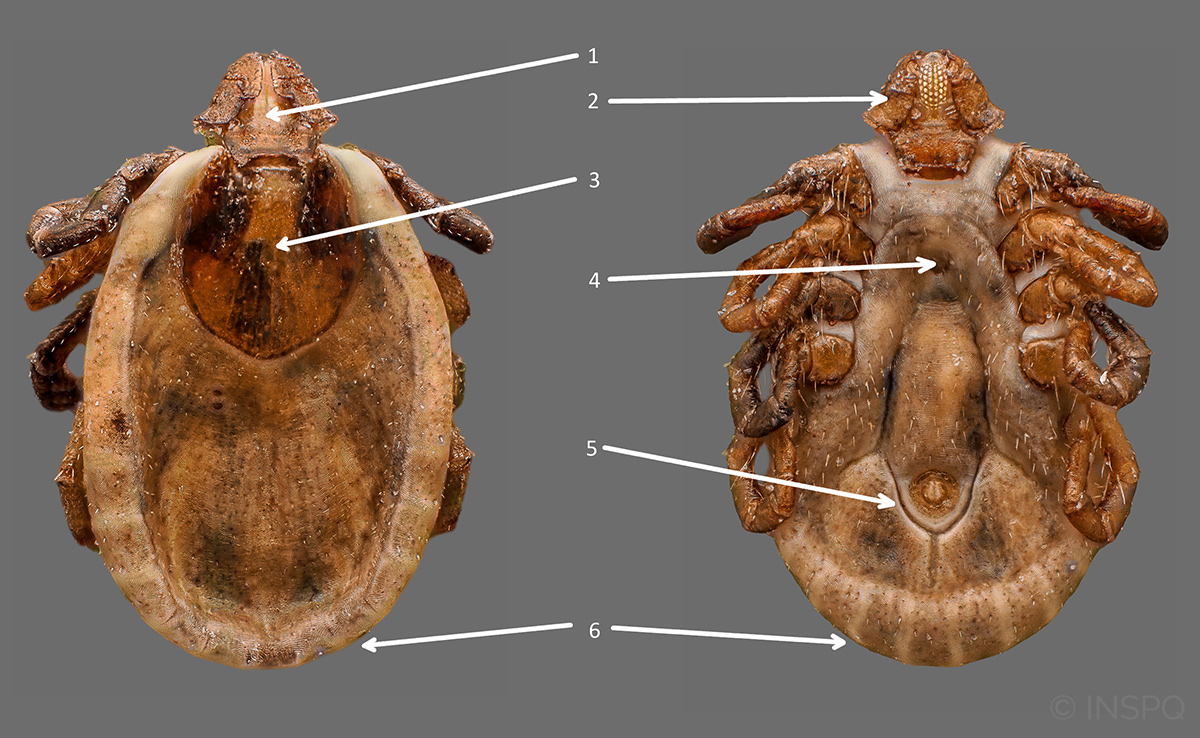Haemaphysalis leporispalustris, or rabbit tick
Clinical considerations
The Haemaphysalis leporispalustris tick is known to be a reservoir of Francisella tularensis, the agent responsible for tularemia. However, it is not a vector of transmission of this disease to humans.
Geographical distribution
The rabbit tick is present throughout much of the province of Québec.
Morphological characteristics
Haemaphysalis leporispalustris in the female stage
Dorsal surface and ventral surface of the Haemaphysalis leporispalustris tick in the female stage.
Head
1 - Basis capituli rectangular
2 - Second segment of palpi extending laterally
Abdomen
3 - Partial shield, inornate
Absence of eyes
4 - The female stage differs from the nymph stage by the presence of a genital pore
5 - Anal groove below the anus
6 - Presence of festoons (band of grooves and ridges on posterior margin of abdomen)
Did you know?
The rabbit tick is sometimes found on our pets, but according to passive surveillance data from the Laboratoire de santé publique du Québec, it does not bite humans. Its role in transmitting diseases to humans is very small or nonexistent.


